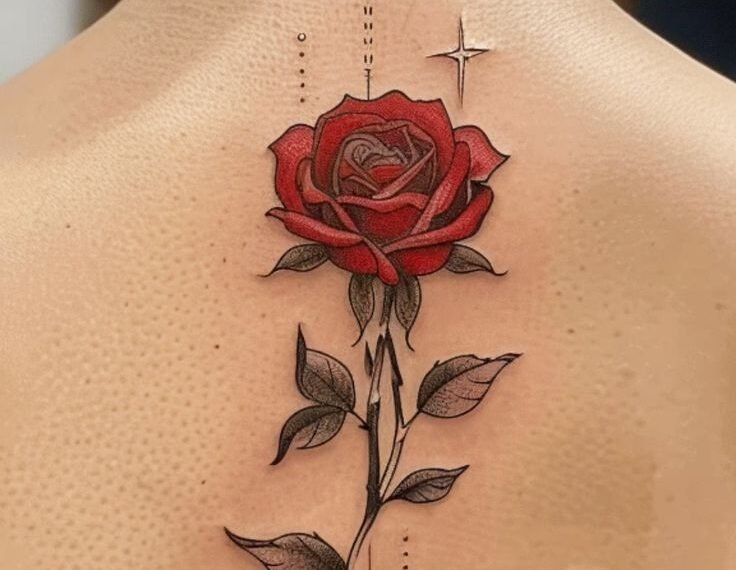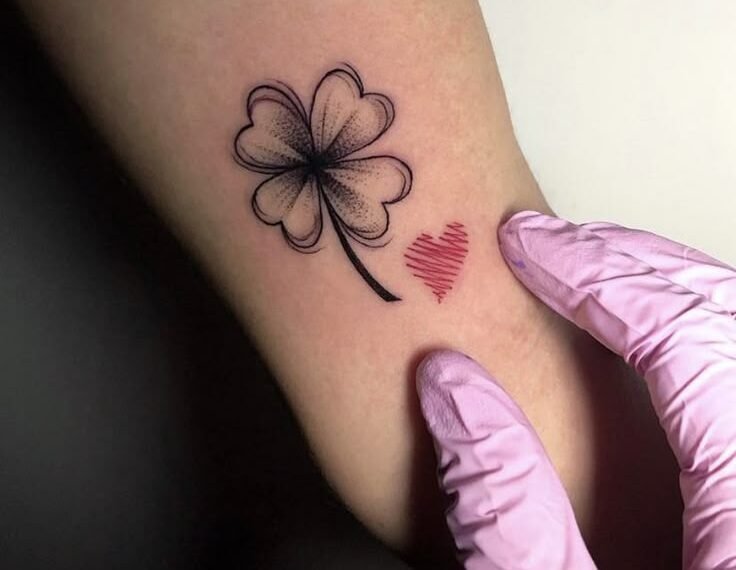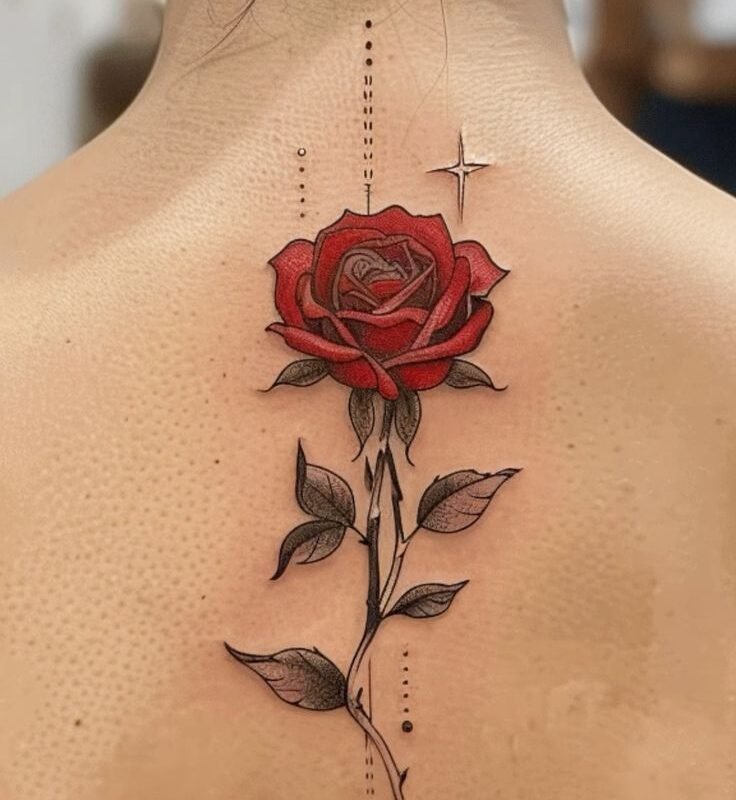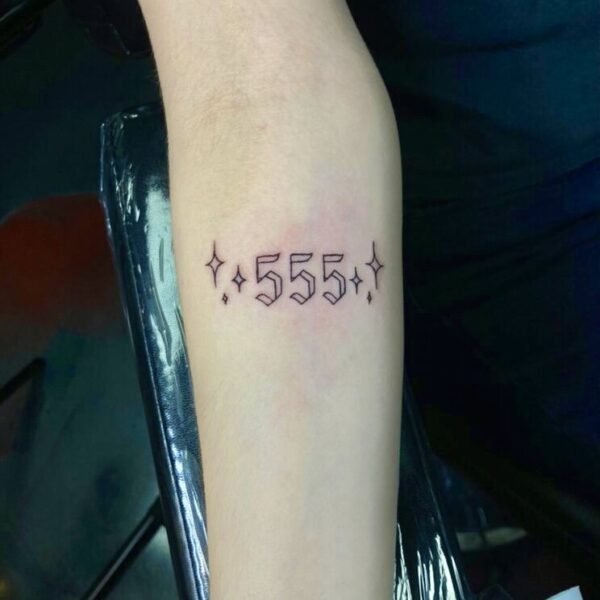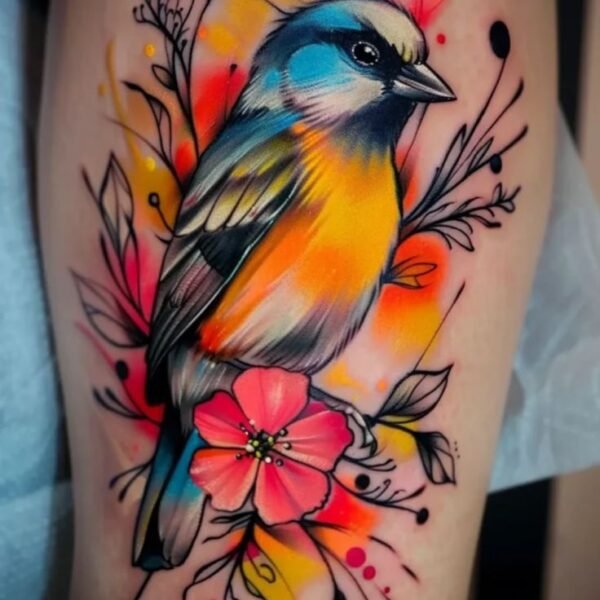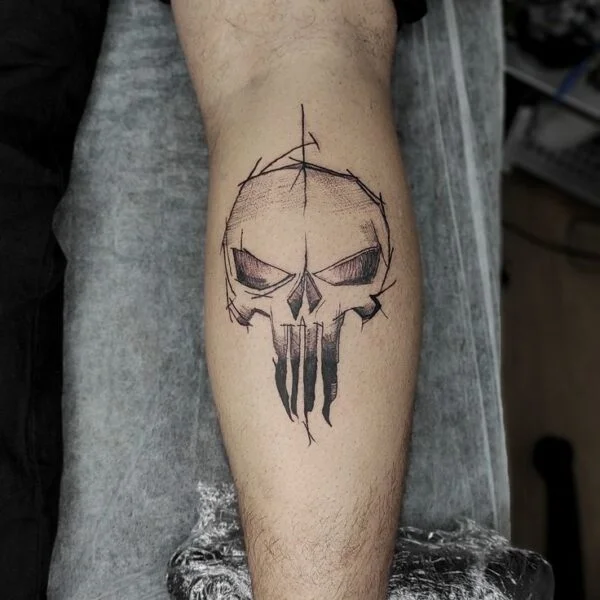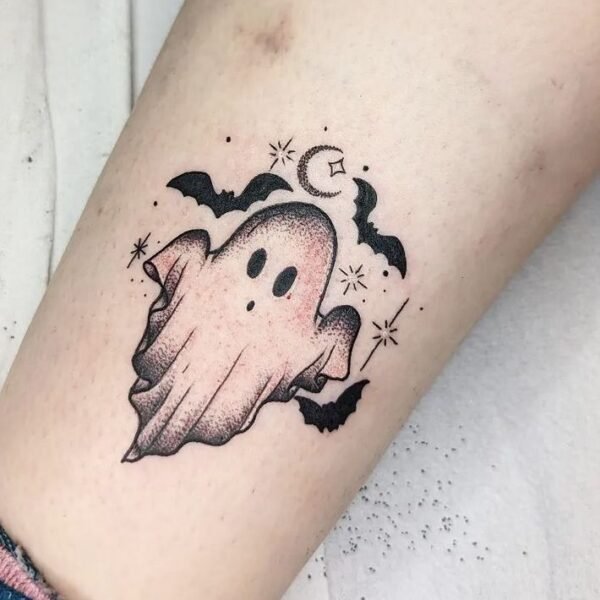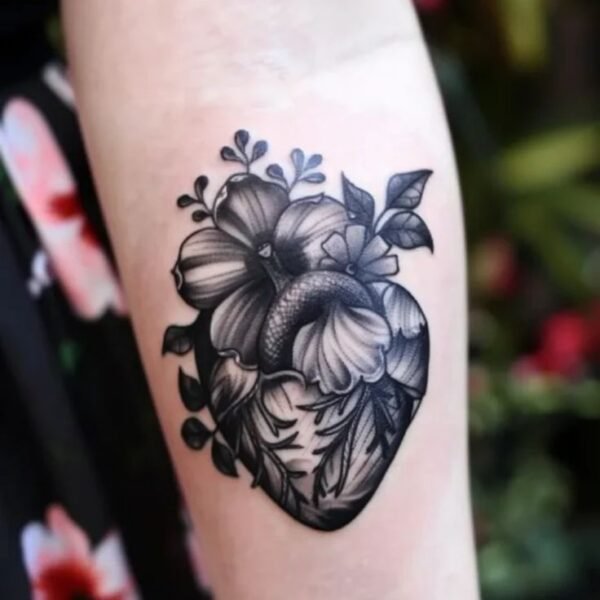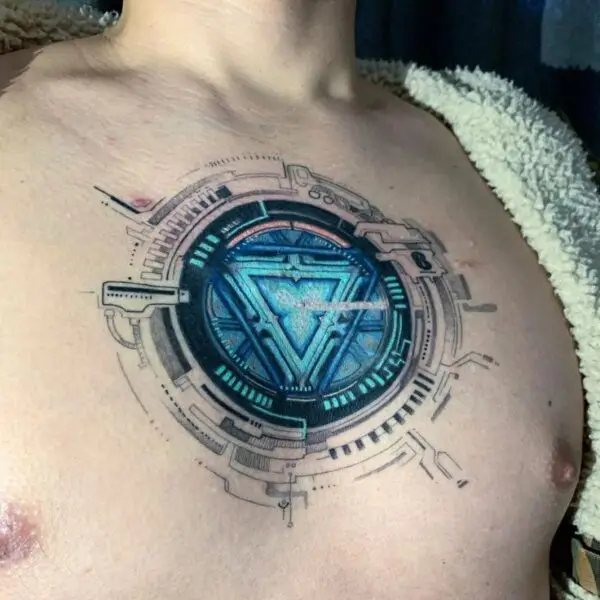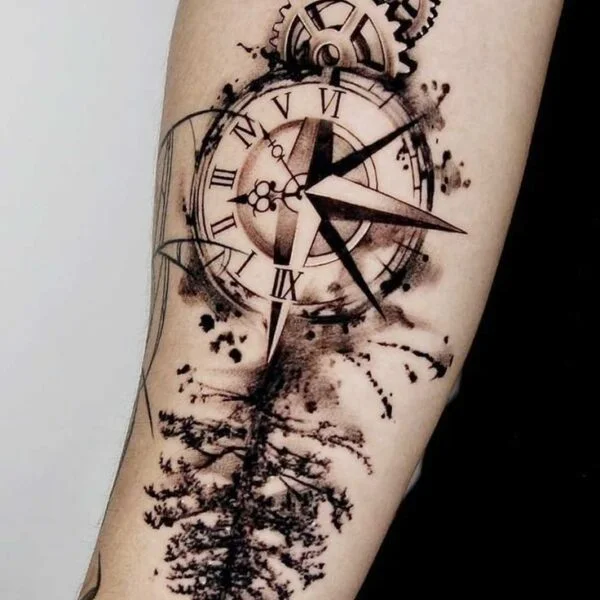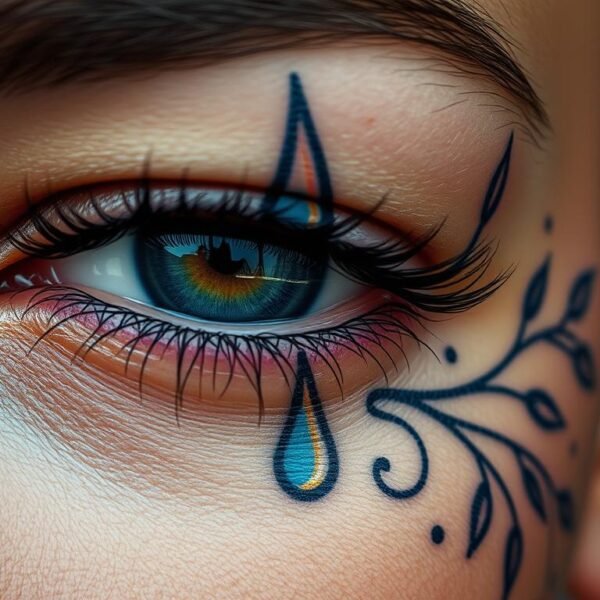Have you ever thought about a person’s life story being tattooed on their skin? In Russian prison tattoos, these designs are more than just art. They tell stories of crime, identity, and resistance through a secret language.
Each tattoo acts as a code, showing an inmate’s status and experiences. The history of prison tattoos is filled with meaning. It shows how every mark has a story behind it, making it a fascinating cultural phenomenon.
Russian Jail Tattoos Ideas and meaning
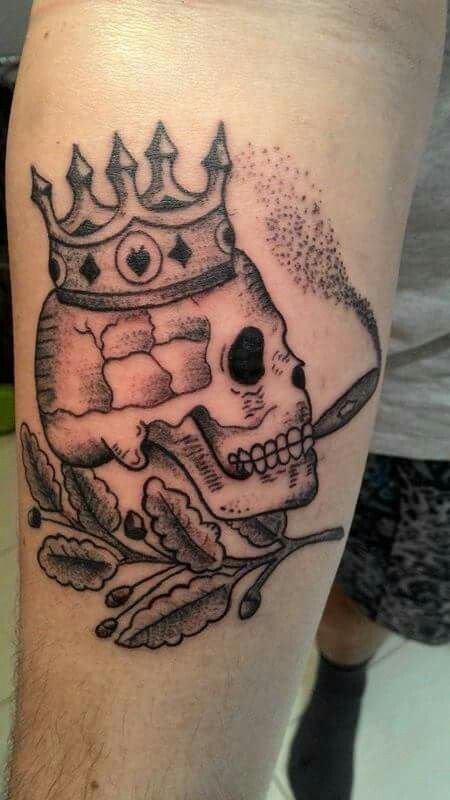
A Brief History of Russian Prison Tattoos
The history of Russian prison tattoos is both fascinating and complex. It started in the 19th century, during Czarist Russia. Tattoos became symbols of identity for inmates back then.
These early tattoos were simple and bold. They included marks like “KAT” for condemned individuals and “BOP” for thieves. These were often placed on the face or other visible parts of the body.
Origins in the 19th Century
Russia’s vast prison system in the 19th century set the stage for these tattoos. Inmates found ways to show their identities and affiliations through tattoos. This culture was shaped by their experiences and the social hierarchies within prisons.
Tattoos became a key part of prison life. They reflected the struggles and stories of the prisoners.
The Evolution During the Soviet Era
The Soviet era saw a big change in Russian prison tattoos. Stalin’s rule, from the 1920s to the 1950s, led to more prisoners. After Stalin died, the political scene changed, affecting the tattoos’ meanings.
Events like World War II led to more convicts, especially those with tattoos. This deepened the tattoo culture in prisons. Tattoos became linked to the “Thieves in Law,” a secret group that controlled tattoo meanings and practices.
The Symbolism Behind Russian Prison Tattoos
Russian prison tattoos are full of meaning, showing personal stories and the inmate community’s social structure. Each tattoo is a story, woven into prison life. They use special codes to show rank, achievements, or who someone is in the criminal world.
Understanding Common Symbols
Many symbols in Russian prison tattoos have deep meanings. A skull tattoo means the person has killed someone. Birds flying over the horizon show a desire for freedom, saying, “I was born free and should be free.”
A barbed wire tattoo on the forehead means a life sentence without parole. Military symbols and three-dimensional tattoos show achievements. These tattoos tell a prisoner’s story and status.
The Role of Tattoos in Expressing Identity
Tattoos are a strong way for prisoners to show who they are. They tell personal stories and show the prison culture. A single cat tattoo means someone is a thief, while many cats mean they’re in a gang.
Each tattoo tells a prisoner’s life story, showing their experiences and crimes. This is a unique way to express oneself in a place where being different is hard.
Russian Jail Tattoos Ideas and Meaning
Russian jail tattoos show a world full of symbols and meanings. Each tattoo tells a story of personal experiences, beliefs, and status. Images like Thieves’ stars, skulls, and portraits of famous figures show the wearer’s individuality and shared experiences.
Detailing Popular Tattoo Designs
Thieves’ stars on shoulders or knees show respect in the criminal world. They symbolize a desire for freedom and power. Skulls represent the shortness of life in prison.
Portraits of Lenin and Stalin are seen as protective symbols. Inmates believed these figures would keep them safe from harm. These tattoos carry powerful messages about past and present convictions.
Insights into Their Meanings and Significance
Jail tattoos mean more than just looks. A spider tattoo can show a commitment to crime or a wish to escape. Orthodox tattoos often show multiple convictions through dome designs.
Phrases like “I don’t need happiness” on the neck show a common inmate mindset. It reflects a fatalistic view of life. These tattoos tell complex stories and show the identity shaped by prison.
Creating these tattoos takes years, showing their cultural value. Russian jail tattoos are like a storybook of prison life. For more on tattoo meanings, check out this resource.
The Art and Process of Tattooing in Prisons
Tattooing in prisons is a mix of art and survival. Inmates find ways to be creative, even in tough conditions. They make their own tattoo equipment from everyday items.
Needles are made from sharpened paper clips. Ink comes from burned rubber mixed with urine. This shows how far prisoners will go to express themselves.
Equipment and Techniques Used
In prisons, inmates make their own tattoo tools. They use metal shards and plastic pieces as needles. Ink is made from scavenged materials, often in unsanitary conditions.
This crude ink is used to create tattoos. It shows the inmates’ creativity and need to communicate.
The Ritual of Getting Tattooed
Prison tattoos have a deep meaning. They show strength and endurance. Getting a tattoo is like an initiation, marking personal milestones and status.
It’s a way to defy prison life. Pain turns into a story, with each tattoo telling a part of their life inside.
Decoding the Language of Russian Prison Tattoos
Russian prison tattoos offer a peek into inmate life. Each tattoo has deep tattoo meanings gang affiliation. They show who’s who in the prison world. Symbols tell stories of experiences, rank, and who’s who in the prison hierarchy.
How Tattoos Communicate Status and Rank
In Russian prisons, tattoos show who’s boss. Certain symbols mean you’re a big shot. For example, the eight-pointed star means you’re a “thief in law.”
Where you put the star shows how far you’ve come. Skulls mean you’ve been in violent fights. They show you’re serious about your crimes.
Identifying Gang Affiliation through Tattoos
Reading tattoos is more than just looking at art. It’s about knowing your gang and its ways. A spider tattoo means you’re a thief. A ship tattoo means you’re always on the move.
Bells warn of long sentences and fighting the system. Since 90% of inmates have tattoos, knowing these symbols is key. It helps you get along in Russian prisons. Learn more here.
Common Tattoo Designs and Their Meanings
Tattoos in Russian prison culture tell deep stories and values. They show the life of inmates through symbols that reflect their experiences and identities. Each tattoo has a rich history and social commentary, giving a glimpse into prison life.
Exploring the Thieves’ Stars
The Thieves’ stars, shown as ascending stars, are key in criminal tattoos. They mean the person is a thief or has a criminal past. This tattoo shows their lifestyle and status in prison, making them stand out.
The Significance of Skull Tattoos
Skull tattoos are important in Russian prison art. They symbolize death and mortality, reminding the wearer of crime’s risks. These tattoos show acceptance of fate or the harsh realities of prison life.
Understanding Portraits of Leaders
Portraits of leaders, like Stalin, are common in prison tattoos. They show admiration or personal beliefs, linking the wearer to politics and society. They also express rebellion, showing the inmate’s complex identity and their views on authority. These tattoos tell a story of struggle and expectations.
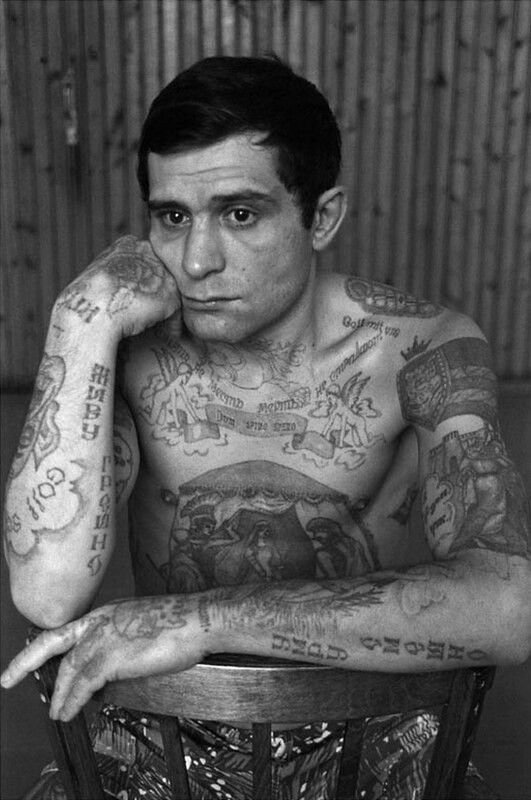
The Role of Tattoos in Prison Hierarchy and Culture
Tattoos in Russian prisons are key markers of authority. They show an inmate’s status, experiences, and loyalty to the criminal subculture. These tattoos are more than art; they show respect and power in a strict environment.
Tattoos as Markers of Respect and Authority
Inmates see tattoos as signs of power. Each tattoo tells a story of their past. For example, cross tattoos show a thief’s rank, proving thieves are respected more than murderers.
One ring tattoo on a finger means one prison term. Some inmates have up to 16 rings. These tattoos help determine a convict’s respect and position in the prison hierarchy.
The Influence of the Thieves in Law
The Thieves in Law have a big impact on this culture. They set rules for inmate behavior and interactions. Symbols like knives mean imprisonment for hooliganism, and animal images show violent robberies.
These tattoos leave a lasting legacy, linking individuals to a history of crime. This art form captures personal stories and shared memories and traumas from Russia’s past.
The Social Implications of Russian Jail Tattoos
Russian jail tattoos are more than just ink. They weave a complex social fabric that touches lives inside and outside prisons. In maximum-security facilities, tattoos are common, shaping cultural views of prison life. These tattoos tell stories of identity, criminal past, and survival, influencing how society sees prison.
Cultural Perceptions within and outside of Prisons
Views on prison tattoos have changed, often seen as tainted. In high-security prisons, almost all inmates have tattoos, linking them to crime. Outsiders often see inmates through this lens, leading to stereotypes. Tattoos speak volumes among inmates but reinforce crime myths for outsiders.
Influence on Popular Culture and Media
Russian jail tattoos have a big impact on media, influencing stories about crime and morality. Movies and documentaries show these tattoos as symbols of defiance or survival. This sparks curiosity among viewers. While media might not always get the story right, the interest in these tattoos grows. It shapes public views, both perpetuating myths and sparking conversations about tattoos as a form of self-expression and identity.
The Modern Landscape of Russian Jail Tattoos
The world of Russian jail tattoos has changed a lot since the Soviet Union fell. These tattoos now carry different meanings and are made in new ways. The old traditions from the Gulag have changed, and new styles have appeared. This shows how tattoos in Russia are always evolving.
Changes since the Fall of the Soviet Union
The Soviet Union’s fall changed the prison system a lot. Now, modern Russian prison tattoos show different things about who someone is. Tattoos still tell stories of a person’s life and status in prison.
Old symbols like stars for strength are still seen. But now, new designs also show what people believe in today.
The Future of This Symbolic Art Form
As Russian society keeps changing, so will prison tattoos. The future of prison tattoos might mix old symbols with new art. Changes in how society views crime and punishment will also affect tattoos.
Tattoos could start telling bigger stories about Russian life. With the world getting smaller, tattoos will play a bigger role in culture and prisons.
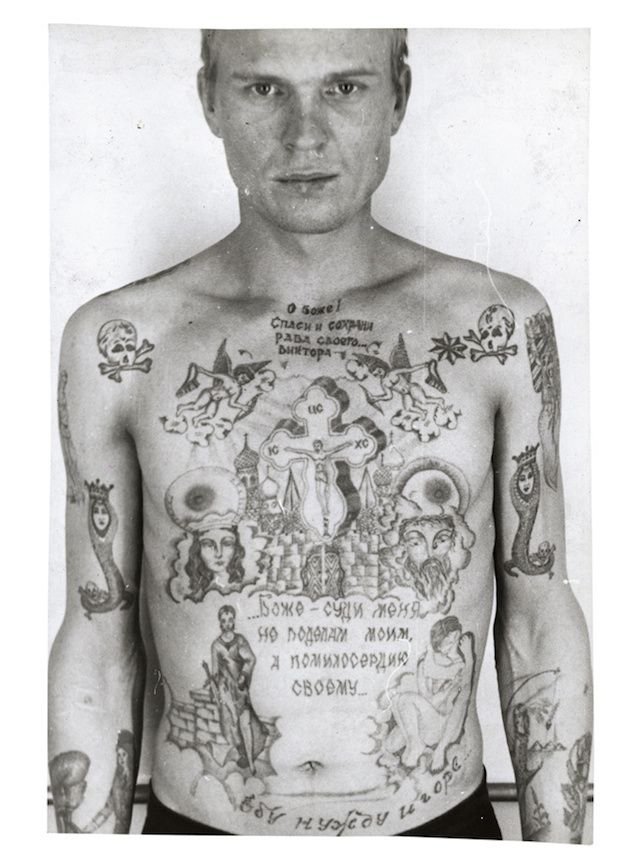
Emotional and Psychological Aspects of Prison Tattoos
Prison tattoos are a personal mark for inmates, with about 90% of them tattooed by the time they leave. These tattoos tell stories of their lives, struggles, and hopes. They deeply affect how inmates see themselves, offering a rare chance to express themselves in a strict place.
These tattoos mean more than just art; they hold deep psychological value. Around 25% of prisoners have tattoos that show their beliefs, like “Only God Can Judge Me.” Designs like melting clocks remind them of time passing in prison. This mix of art and life story greatly affects their mental health.
In prison, tattoos are also about status and belonging. A teardrop tattoo might mean mourning or revenge, while a cross or “ACAB” shows dissent. These symbols help inmates feel connected and supported, fighting against loneliness and hopelessness. Looking into prison tattoos shows a world of stories, struggles, and resilience.
FAQ
What do Russian prison tattoos signify?
How did the history of Russian prison tattoos begin?
What role do symbols play in Russian prison tattoos?
What are some common tattoo designs found among Russian inmates?
What is the tattooing process within Russian prisons?
How do tattoos indicate an inmate’s rank in prison?
Why are tattoos important in establishing authority in prison culture?
What are the cultural implications of Russian jail tattoos?
How have Russian prison tattoos evolved in modern times?
What psychological effects do prison tattoos have on inmates?
I’m a tattoo enthusiast with a love for all things ink. Besides tattoos, I’m into tech, hitting the road for spontaneous trips, and enjoying a good whiskey. I’m also fascinated by the historical aspects and meanings behind tattoos, which is why I created Tattoo Pub. When I’m not on an adventure or geeking out over the latest gadgets, you’ll find me curled up with a good book. Always on the lookout for new experiences and stories to share!


